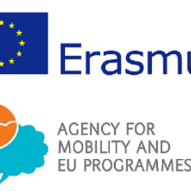ERASMUS+ KA171: New Insights from the project
In a recent joint study published in Aquaculture (ScienceDirect), we tackled a crucial yet often overlooked question: how do we measure stress in aquatic animals—particularly when they’re exposed to challenging conditions?
We performed a comprehensive review of existing stress-indicating methods in fish and shellfish, distinguishing between two categories:
- Contact indicators, such as measuring cortisol levels in blood or tissues—accurate but invasive and sometimes harmful.
- Non-contact indicators, like monitoring behavior, changes in water chemistry, or using imaging and telemetry—a gentler approach, better suited for animal welfare.
We propose a new classification system to organize these metrics by how invasive they are and how reliably they signal stress.
Key Findings
- Traditional contact methods (e.g., blood cortisol) remain reliable but stressful and often impractical for large-scale use.
- Emerging non-contact techniques—behavioral monitoring, remote imaging, and water-based indicators—show promise for welfare-friendly stress detection.
- The proposed taxonomy helps aquaculturists balance accuracy with animal wellbeing, guiding them toward the most appropriate stress-measurement strategy for specific situations.
The study is available here.
Read More
